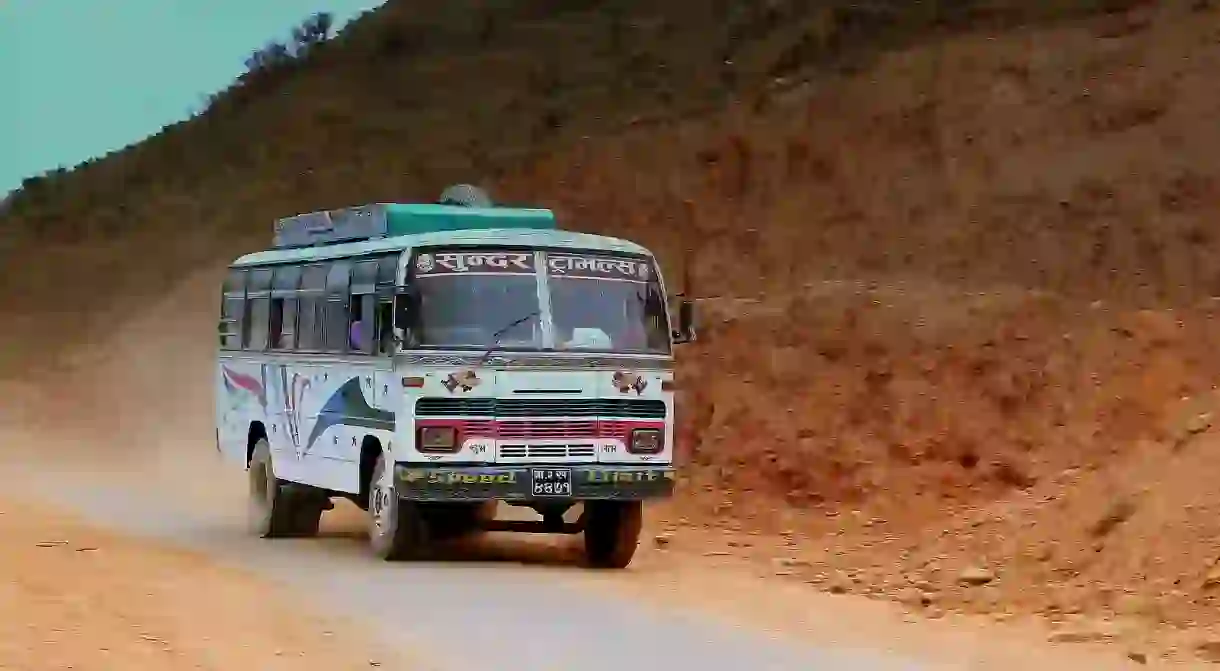How to Navigate Transport in Nepal

Nepal may look small on the map, but its hill and mountain terrain and very poor roads make getting around difficult and time-consuming. Here are some tips for navigating transport in the South Asian country.
Domestic flights
By far the quickest way of getting around Nepal is by domestic flight. For instance, a road trip from Kathmandu to Pokhara can easily take eight hours. By air, it’s barely 30 minutes. In certain parts of the country with no road access, flying to a remote mountain airstrip can shave days of travel time.
Unfortunately, domestic air travel in Nepal is not very safe. Four of Nepal’s major domestic airlines have recently been listed among the world’s least safe airlines, plus Lukla’s Tenzing-Hillary Airport, the gateway to the Everest region, and Jomsom Airport, the gateway to Mustang, are frequently cited as the most dangerous airports in the world.
Local tip: Even with this unfortunate air safety record, given the poor conditions and extremely high risk of travelling on Nepal’s mountain roads, we would still opt for half an hour in the air over 10 hours (plus) on a bus any day.

Tourist buses
Tourist buses ply the routes between major towns and cities of most interest to tourists (both Nepali and international). There are dozens of companies that travel daily between Kathmandu and Pokhara, while other bus routes include Kathmandu to Chitwan, Pokhara to Chitwan, Kathmandu to Lumbini and Pokhara to Lumbini. Tourist buses cost a bit more than local buses (for example, Kathmandu to Pokhara costs around US$10), but are more comfortable in that they are usually air-conditioned, they stop for toilet and meal breaks and they are not over-crowded. They usually depart from different bus stands and tickets can be purchased from bus companies or travel agencies around Kathmandu (especially Thamel), Pokhara and other tourist hubs.
Local tip: During peak season, it’s a good idea to buy tickets ahead of time.

Local buses and mini-vans
Most Nepalis get around the country via local buses and minivans. They’re cheap (around US$5 to get between Kathmandu and Pokhara), frequent and travel between towns and villages that aren’t connected any other way. But, they’re also uncomfortable, often travel at dangerous speeds, are over-crowded and stuffy. Nevertheless, for those trying to reach places that aren’t covered by tourist buses, these may be the only option.
Long-distance local buses leave from around Kathmandu, including Gongabu, Old Bus Park, New Bus Park and Lagankhel. Asking around is the best way to get information about your destination, as any signboards or ticket booths normally only display their information in Nepali.
Local tip: Although you’ll see it, riding on the roof of the bus is not actually legal in Nepal. You may get a chance to (or have to!) in rural areas, but you’ll also be asked to jump down if the driver knows a police checkpoint is up ahead (most common in areas close to the Tibet border).

Taxis
Taxis are the most expensive means of transport, but they can also be the most comfortable. They can often be hired for long-distance travel, but city taxis do need permission from the police to travel outside of their area, so this fee will be added to your fare. There are no fixed rates for taxis and while we’ve heard that some have working metres, they are a rare find. Taxis in Nepal are almost always small and white and in the cities, they tend to congregate together at intersections or designated stands.
Local tip: Ask someone you trust – such as staff at your hotel – what the going rate should be for your trip and negotiate with the taxi driver from there. Keep in mind that depending on where you want to go, the driver may not be able to get a return fare, so they will factor this in.














